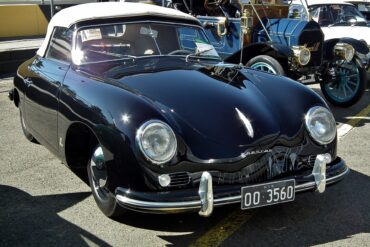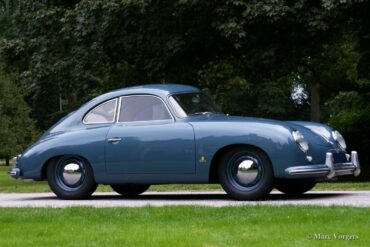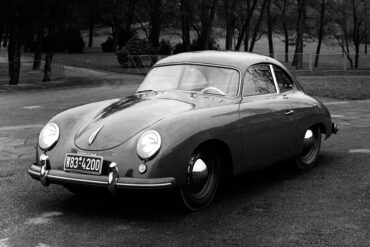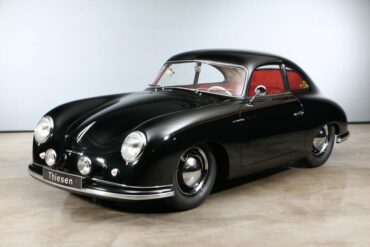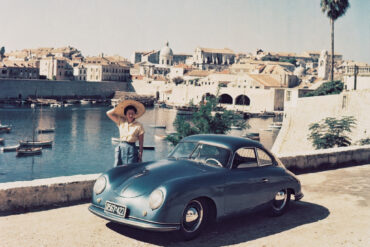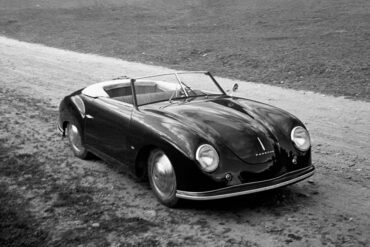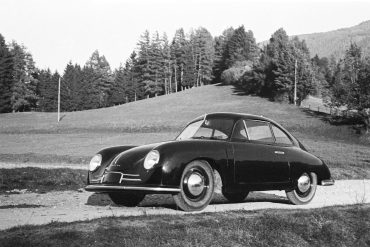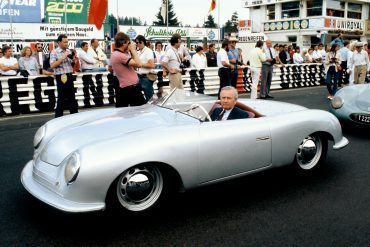In 1953, the 1300 S or "Super" was introduced, and the 1,100 cc engine was dropped. The 360 1300 Super boasts a power improvement to 60 BHP with Porsche's "Super" engine in the Porsche 356 model range. Minor visual differences were implemented such as front indicators integrated with the horn grilles and bumpers protrude from the body with over-riders. In June 1954, the plain-bearing 1300cc engine switched over to the same block as the 4cc larger roller-bearing variant.
Towards the end of 1951 Porsche introduced a larger version of the flat four engine. It was offered alongside the original 1.1 litre engine. It took a lot more effort to develop the third variation on the four cylinder theme; the '1500.' Introduced in the 356 1500 during 1952, the engine produced 55 bhp. Porsche's competition department reworked the 1500 engine with hotter cams and bigger Carburetors, boosting power to 70 bhp. In 1952 this engine found its way into a new road car; the 356 Super.
The 1500 was Porsche’s newest engine which was quickly fitted with 40 PIBC Solex carburetors to produce 60 bhp @ 5000 rpm in 1952. These retained the Hirth roller-bearing crankshafts which gave Porsche enough clearance to enlarge their engine to 1500cc. Most cars from 1952 until the 356A of 1956 were powered by the 1500 engine but some left the factory with the smaller 1.1 and 1.3-liter engines. At the request of American importer Max Hoffman, 356s for the 1955 model year were badged as Continentals before reaching the U.S
The Porsche 356 Pre A Coupe and Cabriolet were introduced in 1950 and was available through mid-1955. Beginning in 1950 it was offered with a 1100 cc flat four that produced 40 hp. In 1951, a bigger 1.3-litre Type 506 engine was announced. It marked the first significant move away from the original Volkswagen unit. Bored from 73.5mm to 80mm (stroke was unchanged at 64mm), displacement rose from 1086cc to 1286cc. Further enhancements included lightweight alloy cylinder barrels and nosed pistons. Output rose from 40 bhp to 44 bhp and torque increased from 51 lb-ft to 60 lb-ft.
The series production didn't allow the use of handmade aluminium body panels, so, the cars were made of stamped steel panels. The first Stuttgart-built 356 have later been called as 356 Pre-A. These cars have either two separate windscreen glasses like the 356 built in Austria, or a sharply bent windscreen glass! Introduced in 1948, the Porsche 356 Pre-A Coupe was the first variant available for the Porsche 356. The engine started as a 1100 cc flat four that produced 40 hp. It was available as a coupe and cabriolet body style.
Of the 52 cars made in Gmünd, only eight were built up as cabriolets. Each was outsourced for its body and interior construction. Six cars were sent to Beutler who constructed them with a slightly different shape than the factory coupes. Included was a kicked-up rear fender line which was used on several of the Buetler cabriolets.
With lessons learned from 356 No. 1, Porsche developed the 356/2 as a production-ready version. The biggest concession to useability was repositioning the engine back behind the rear wheels as the original VW design. Like 356 No. 1, 356/2 was built as two-seat roadster using VW parts.
The Porsche 356/1 was the first real car created by Ferdinand "Ferry" Porsche. This prototype car was a two-seater open roadster with a mid-mounted, air-cooled flat-4 engine of 1,131 cc displacement. While the body was an original design, most of the mechanicals were from the Volkswagen Beetle. Only one 356/1 was made.


